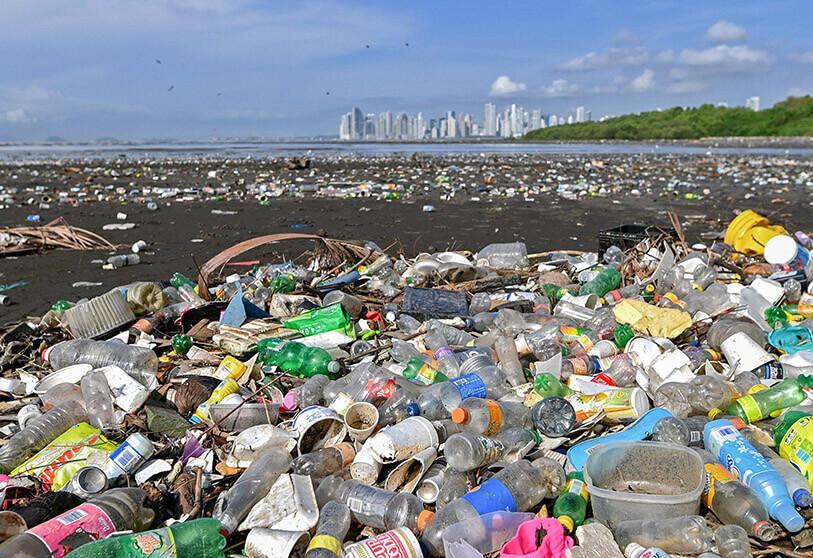Emerging markets seek solutions amid increase in plastic waste
July 5, 2022931 views0 comments
BY OXFORD BUSINESS GROUP
More than two years after the start of the Covid-19 pandemic, many emerging markets are still dealing with high levels of plastic waste. Amid numerous environmental and health challenges, countries and companies alike are working on solutions to combat the issue.
Accounting for around 12% of global solid waste before the pandemic, according to the World Bank, plastic took on a more prominent role during the health crisis.
Personal protective equipment (PPE) was seen as key to stopping the spread of the virus, while the single-use plastics employed by delivery food services in particular also proliferated.
Read Also:
Although an OECD report published in February found that overall plastic use actually fell by 2.2% in 2020 due to the decline in economic activity associated with lockdowns, the increased use of PPE and single-use plastics exacerbated plastic littering, leading some to describe the situation as a “plastic pandemic”.
In the early months of the pandemic it was reported that face masks and latex gloves were regularly washing up on beaches in South-east Asia, while at the COP26 UN Conference on Climate Change in November last year, Walter Roban, the deputy premier of Bermuda, said that Bermuda’s coastline was being swamped by plastic.

Although governments have implemented other strategies to help combat the virus, the pandemic-level production of PPE and single-use plastics has continued in some parts of the world, with China’s recent mass testing strategy resulting in large amounts of plastic and medical waste. In addition, the rebound of the global economy has led to an increase in broader plastic production and use.
Compounding the issue is the low percentage of plastic recycling. The OECD estimates that 9% of plastic waste is recycled, with 50% ending up in landfill, 22% evading waste management systems – and ending up in uncontrolled dumpsites, open pits or waterways – and 19% incinerated.
Challenge for emerging markets
The situation poses a number of challenges for emerging markets.
Unlike global carbon emissions, of which approximately 45% are generated by China and the US, the creation of plastic waste is more evenly spread.
According to a 2018 World Bank study, the US, China and India were responsible for 13%, 11% and 9% of global plastic waste, respectively. Europe – excluding Russia – accounted for 20%, Latin America 11%, sub-Saharan Africa 9%, and the Middle East and North Africa 7%.
Emerging economies, which often bear the brunt of the damage plastic waste can cause, therefore have an important role to play in tackling the issue.
On top of the plastic that emerging markets produce themselves, the export of plastic waste from developed nations to emerging markets poses further challenges.
While this practice does provide some economic opportunities for lower-income countries, much of this plastic is often difficult to recycle and ends up in local ecosystems, creating significant health risks: the toxic chemicals contained in burned or discarded plastics have been linked to serious health issues such as cancer for those sorting through plastics. For example, Zambia has experienced several cholera outbreaks due to poor drainage exacerbated by plastic-clogged systems.
Bans, improvements and innovations
At the public level, emerging markets have often been leaders in banning the use of certain plastics. Bangladesh was among the first countries in the world to ban thin plastic and polythene bags in 2002, while more than 30 African countries have implemented either full or partial bans – or introduced heavy taxes – on plastic products.
The plan aims to reduce plastic inputs into the system, enhance collection capabilities, minimise leakage and create value for waste reuse. It includes guidelines for countries to phase out single-use plastics, harmonise regional standards on recycling and plastic packaging, and strengthen regional measurement and monitoring of marine debris.
Foreign countries have also offered assistance, with the US International Development Finance Corporation (DFC) announcing in June that it had provided Indian company Banyan Sustainable Waste Management with a $9m loan to bolster its plastic recycling capacity from 15,000 to 51,000 tonnes per year.
The DFC also pledged to provide Sri Lanka’s BPPL Holdings, a polyester yarn manufacturer that uses recycled plastic materials, with a $15m loan to expand its production capacity and strengthen Sri Lanka’s recycling infrastructure.
A number of other innovative measures have been designed to address the plastic problem.
For example, Hong Kong-based start-up EcoBricks uses plastic waste from old washing machines that would have otherwise been bound for landfill sites to create construction materials.
Earlier this month the company’s inaugural project saw it provide 15,000 bricks to pave a promenade in Hong Kong’s Tuen Mun district, with the plastic used in the bricks sourced from 560 old appliances.
In a similar initiative, a team from Indonesia’s University of North Sumatra developed a biodegradable wood-plastic composite that could be used as a material in the construction of houses, fencing or furniture.
While research is continuing, initial tests suggest that the material could be digested by termites native to Indonesia, which could position the composite to replace other more environmentally harmful building materials.
These developments build on existing innovations. In October 2018 Siam Cement Group (SCG) and Dow Thailand Group unveiled a 220-metre strip of road made from recycled plastic.
The process sees plastic collected, cleaned and crushed into smaller pieces before being mixed with asphalt.
According to Chulalongkorn University’s Faculty of Engineering, the recycled road is 15-30% more stable than asphalt concrete and, per data from SCG, more resistant to water erosion.
